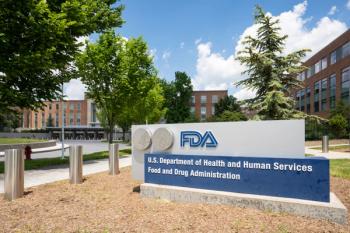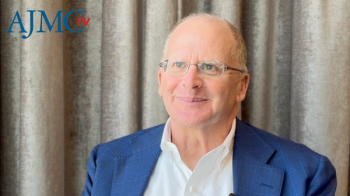
Logistical Issues Associated with Monoclonal Antibody Use in RSV Prevention
Barriers to optimal monoclonal antibody strategies are discussed by the panelists.
Adam C. Welch, PharmD, MBA, FAPhA: I’m thinking [of] the logistics of all this, trying to administer antibodies while they’re still in the hospital, while everything else is going on. It seems like it may not always happen the way we draw it up to happen. So what do you think are some of these practical considerations or some of these logistical issues that we may see with a monoclonal antibody approach to care?
Debra Boyer, MD, MHPE: From a practitioner standpoint, taking care of these infants, I would say that the hard part is there are infants we identify whom we want to give prophylaxis to. Often, it’s found that we can’t get it paid for in the hospital. So then we have to arrange for them to go to their pediatrician, and then they have to take over. But there is this gap in care. We hope that the family will make it to those appointments, we’ll follow up, and then the primary care practitioner will follow up on that. So there are those logistics. There’s a cost to it, and then there’s the compliance right now. And we can talk about the one-time new monoclonal that’s out there, but right now it’s requiring monthly injections. And so that can be a barrier to some families as well. At least those are my thoughts.
Kimberly C. Chen, DO, MSHLM: To your point, Medicaid populations who tend to have the most access barriers and also [adherence] barriers have a large population with RSV results [and] hospitalizations. So changes or exceptions need to be made to make sure those population patients get their monoclonal antibody while they are in the hospital and also [to] make sure it’s available to pharmacy [and] providers’ offices. That will be the most ideal situation. But at the end of the day, it goes back to provider and health planning/case management working together and us working together. We can definitely [make] sure those [who] need support, those vulnerable patients, get [it]. There are different ways we can send nurse[s] to home[s] to provide some of [those] injection[s], possibly working with providers, and there’s so many creative things health insurance companies can do to support these members [with] high vulnerability [and] high cost. [We need to make] sure we keep that communication open between the provider, health insurance company, and the patient and patient’s parents as well.
Adam C. Welch, PharmD, MBA, FAPhA: That communication would be important to optimize that care. I want to go back to the timing of all this because I can’t help but think if the baby’s born in the middle of the summer, you’re not thinking about upper respiratory infections that much. If they’re born in the middle of winter, maybe you’re thinking about it more often, but it really doesn’t matter as much. I’m asking this question. Does it matter as far as the seasonality of this vs giving the antibody treatment to the baby, giving the maternal vaccine? Does any of that have a timing factor to it? Dr Boyer, I’ll start with you.
Debra Boyer, MD, MHPE: It certainly could, right? If you’re talking about a maternal vaccine and the baby is set to deliver in July, that baby’s protected for those 90 days. And again, this past year, when we did have a surge over the summer, that would have helped. But in normal seasons, that wouldn’t have…caused a significant benefit. But if the baby’s born in November, that would provide the baby with a benefit. So season of birth depends. And different strategies have shown to be effective or more effective in different economic environments. Low- and middle-income countries benefit from different strategies than a country that has a higher income. And so that has to be taken into [account]. In the United States, monoclonal antibodies seem to be more cost-effective than maternal vaccination, but I don’t know whether that is going to hold true as we continue forward. So it is still something to be determined.
Kimberly C. Chen, DO, MSHLM: But one thing [to not] forget is prior authorization. It’s going to potentially, as we talked about, 40 to 70 days, assuming all 20 get approved and there’s no last of the [preoperative care]. So [we want to] make sure we do that early as well.
Debra Boyer, MD, MHPE: The one thing I would add is [that] different populations have different risks. So there’s literature out there on Native American and in particular Alaska Native children who have a higher risk and a prolonged time course that they’re at risk for RSV. So again, the same guidelines should not be applied to every population, but we need to be careful and understand that different populations have different risks as well.
Adam C. Welch, PharmD, MBA, FAPhA: It sounds like there’s a lot of moving parts with this, different types of risk, somewhat of a seasonality approach, in the fact that we’re really targeting 2 different people, mom and baby, as far as this prevention approach. Dr Chen, if you can comment on the prior authorization, would this be flooded with people who are seeking both options? Maybe they’ve received the vaccine maternally, but now for some reason or another, whether it be a fragment in the health care system or some other matter, some high risk, they’re also seeking the infant antibody.
Kimberly C. Chen, DO, MSHLM: I can’t see criteria for the infant…and those factors that we discussed earlier, but I have not seen recommendations for pregnant woman at this point or any prior availability for a pregnant woman. And I know ACIP [Advisory Committee on Immunization Practices] hopefully will have some recommendation to us soon, and that can further guide us for the coverage for pregnant woman.
Adam C. Welch, PharmD, MBA, FAPhA: And it’s important to realize [that] as we’re talking about this right now, ACIP still has not met to vote on their recommendations in this space. And that probably will happen by the time these videos are published because it’s such an evolving landscape with RSV and infants and children here. So things may change, and it’s important for providers and payers to really stay up-to-date with that information.
Transcript edited for clarity.
Newsletter
Stay ahead of policy, cost, and value—subscribe to AJMC for expert insights at the intersection of clinical care and health economics.

















































